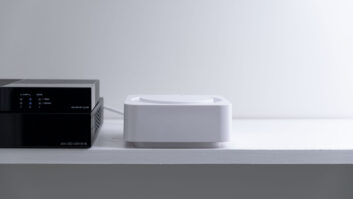When you think about it, we work in a strange industry… an industry unlike any other.
Often we encounter people that not only aren’t sure exactly what it is we do, but also aren’t sure they even want or need what we offer. This is a dynamic pretty much unlike any other shopping/buying experience.
As an example, consider a typical purchasing encounter that people might go through.
Customer: “I want to buy a (car, watch, piece of art, bottle of wine).”
Salesman: “OK. Do you have your eye on anything in particular?”
Customer: “Well, I’ve been doing some research and I really like this (car, watch, piece of art, bottle of wine).”
Salesman: “That’s an excellent choice and a great (car, watch, piece of art, bottle of wine). All of my other clients that went with that have really enjoyed their purchase. Do you have any specific questions?”
Customer: “Well, can I get it in (blue, gold, a custom frame, this vintage)?”
Salesman: “I’m sure we can accommodate you. The price would be $X; was that in your budget?”
Customer: “Yes, I’ve done my research and already pretty much know what this (car, watch, piece of art, bottle of wine) was going to cost. I’d just like to discuss some options and see how that would affect the final price.”
In this – and most shopping instances – the customer knows exactly what they want, they have an idea what the options are, and a general idea of what it costs.
Contrast that with a more typical AV encounter that we typically face.
Customer: “What is it that you people do?”
CI: “Well, we design and install audio/video and control systems in people’s homes.”
Customer: “Oh. OK. Well, I think I might want to buy a (home theater, housewide audio, automation) system.”
CI: “OK. Let me ask; have you seen anything in particular that you liked?”
Customer: “No. In fact, I have absolutely no idea about this stuff. None. Like zero. I’m not even sure I actually want to buy one. My cousin’s, friend’s, neighbor’s lawn guy said something about it, so I figured I should look into maybe buying one. Or something. Honestly, I’m pretty happy with my system right now. I just thought I’d see what is out there.”
CI: “OK. Well, there are quite a few options available; let me show you some different things. So I can better determine which system might be right for you, do you have any idea what your budget might be?”
Customer: “Look, I have ABSOLUTELY NO IDEA what this stuff costs. Could be a $100, could be, I don’t know, $1,000. But if I tell you my budget, then you’re just going to give me something that costs exactly that, whether that’s what I need or not. If I tell you $5,000 then you’re going to give me a system that costs $5,000, aren’t you?”
CI: “Probably. But some of that will depend on your room and your (viewing, listening, control) needs and performance goals. But with a budget in mind, I’ll be able to give you the best system that your $5,000 can buy instead of just guessing what your budget might be and then grossly over or undershooting it.”
Customer: “Well, I don’t want to spend no $5,000, I can tell you that much. Maybe you just need to work up a few different options, like good, better and best.”
CI: “Well, that’s really three times the work for me and still might end up missing the target. Are you looking for ‘best’?”
Customer: “I don’t need no Sony or Bose or top-of-the-line or anything. I just want something good. You know. Good picture and sound. But I’m not trying to have some kinda damn (movie theater, concert hall, recording studio, night club) in my house. I just want something good.”
CI: “OK. Give me just a moment to go in the back room and (beat my head against my desk for five straight minutes while I question my faith in humanity) get some information and then I’ll show you some different things.”
Customer: “OK. Oh, and while you’re back there, I’m probably going to be looking up prices on the Internet of all the things that you might show me…”
The only way that I can possibly put myself into the “I have no idea” mindset of one of our typical clients is if I were going shopping for, oh, I don’t know, a bunch of high-speed centrifuges, or avionic turbine blades or something. How much do they cost? Which speed or alloy options do I need? Why the hell am I even considering buying them?!? Exactly.
So, how can you help people that are so far outside of their element that they might as well be shopping for the most obscure, unknown thing you can think of?
Try to put yourself in their shoes.
Empathize with them. How would you want the centrifuge salesman to help you make a purchase? Would you want to be given a doctoral thesis presentation on the history and multiple uses of centrifuge technology, or just the information needed to make an informed purchasing decision? And when you found someone that you trusted with your centrifuge buying needs, wouldn’t you want to reward that person with your business?
Remember, you’re the expert.
Most of the people that come to us – even when they are directly asking for what may seem like complex information – are not looking to be techno-babbled with some kind Mr. Wizard type of answer. Sometimes we have so much information at our disposal that we might start rattling off specs and facts and figures that will likely come across as Stephen Hawking “A Brief History of Home Theater” astrophysics-speak to them. Sure, they might leave thinking, “Wow, that guy sure knew a lot,” but they probably won’t leave armed with the information needed to make a decision or with the feeling that you understand their wants or needs. Explain things in large concepts and ideas, painting in big brush strokes that are easy to understand.
Ask leading questions.
With the right questions, you can help them to arrive at the system that is right for them. This not only gets – and keeps – them involved in the process it makes them feel like they are actually the ones choosing the system. “Is your room big or small?” “Would you say you watch more movies or music?” “What kind of volume do you normally listen at?” “How do you picture the system looking?” “What is going to be the most important thing; the performance, the look or the budget?” When they feel like they have had a hand in selecting the system, they will feel more invested in it.
Don’t give them an encyclopedic information dump.
I have actually caught myself – more than once – starting a sentence with, “Well, to understand that, first we need to go back and understand the history of surround sound…” Sure, some people may want that kind of information – and if so, great; make sure you always know more than your customer! – but most people’s eyes will quickly glaze over into that 1,000 yard stare of Charlie Brown’s teacher talking. Remember, they are coming to you to buy something fun! They aren’t looking for a college level education on AV. This is the kind of information overload that results in people leaving and saying, “Wow! I’m even more confused now than when I came in!” That’s a fail. Focus on just providing the information necessary to educate them to make the right decision.
Make sure they understand.
Ever been in class and the instructor spent minutes going over something that you totally didn’t get and then asked, “Any questions?” Did you raise your hand? Probably not. Because no one wants to look like they’re slow and not getting it. So, if you think that you might have lost them, ask them in a way that makes it easier for them to say they need more info. I’ll usually say something like, “I might not have explained that very well; did you understand what I was talking about?” This puts the blame on you, not them, making it easier for them to ask you to explain it again.
Ask for the sale.
When you’ve finished, don’t be afraid to ask for the sale. Sometimes, people are ready to be closed and they just want you to take their hand and help lead them into the Promised Land. Something gentle like, “Well, this really seems like the perfect system for you. If I’ve answered all of your questions, are you ready to move forward and we can pick a date to come out and do the installation so you can start enjoying this awesome system?” Sure, you might get the, “Well, I need to think about it…” but you’ll also get more dates on your install calendar.
Sometimes people don’t even know what it is they want; it’s our job to help them figure it out. And once we do, we’ll probably have a customer for life.
John Sciacca is principal of Custom Theater and Audio in Myrtle Beach, SC.







